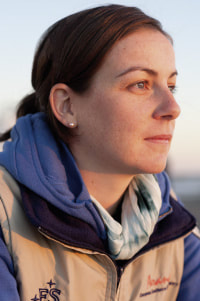For those who don’t know me just yet, I am an ASTRO3D Fellow at the University of Sydney working on the SAMI Galaxy Survey. Before that, I was the International Telescopes Support Office (ITSO) Research Fellow for 4 years and an ESO Fellow between 2011-2013 after completing my PhD from Swinburne University in 2007-2011. I have experience observing with many of the major optical facilities around the world (ESO VLT, AAT, Keck, Subaru, Gemini and Magellan). I have had the privilege to interact with a large cross-section of the Australian astronomer community during my role as an ITSO fellow and my PhD years, and have a very good understanding of the diversity of scientific interests and expertise within the community. If I haven’t had the opportunity to meet you yet, please feel free to introduce yourselves also.
The ESO UC meets yearly around April at the ESO headquarters in Garching, Germany. Prior to the April meeting, I will circulate the ESO UC Poll. This is the best forum to send your comments and is the only representative way through which the UC can do its advisory role for ESO. The poll is organised by the community and for the community. Responses and other feedback sent to me throughout the year will be collated in a report to ESO, which will then be presented at the meeting in April. You will find more information about the upcoming ESO UC meetings as well as a link to last year’s minutes at the following URL: https://www.eso.org/public/about-eso/committees/uc/uc-42nd.html.
The ESO UC is also tasked with providing nominations for the ESO Observing Programmes Committee (OPC), which is responsible for telescope time allocation (more commonly known as a TAC here in Oz). A call for new OPC members will go out twice yearly, so stay tuned. The OPC is divided into “13 panels, each composed of 6 panel members. Each panel is chaired by an OPC member. Because of the different subscription rates of the four scientific categories (A: cosmology, B: galaxy structure and evolution, C: planets and star formation, D: stellar evolution), there are an unequal number of panels per category. Specifically, 3 panels in A, 2 in B, and 4 in C and D. This also implies that the amount of Panel members for each category is different (A: 18, B: 12, C: 24, D: 24). In total, 78 referees are needed in the OPC/Panel composition.” Furthermore, the “OPC Chair and the Panel members are required to serve for two semesters, while OPC members serve for four semesters” and “every semester there is a turnover of 25 to 35 OPC/Panel members”. More information on the OPC nomination procedure and requirements can be found here: http://auditore.cab.inta-csic.es/eso-uc/files/2015/07/OPC-Nomination-Guidelines.pdf
I note that theorists and “non-optical” astronomers are also welcome on the OPC.

